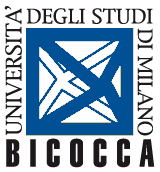Italian Constitutional Court (Corte costituzionale), No. 155/2025, 23 October 2025
Thematic areas
President
Areas
Country
Rapporteur
Abstract
It is irrelevant and not an obstacle to the artificial reproductive treatment cycle the eventual subsequent gender transition of the patient who precedently stored her semen.
Normative references
Artt. 2, 3, 31, 32, 117 Artt. 5, 12 Italian law on artificial reproductive treatments of 19 april 2004 no. 40
Art. 8, 14 European Convention of Human Rights
Art. 2 International Pact on civil and political rights
Artt. 3, 9 International Pact on civil and political rights
Ruling
1. The questions of constitutional legitimacy of Articles 5 and 12, paragraph 2, 9 and 10, of Law No. 40 of 19 February 2004, raised with reference to Articles 2, 3, 31, paragraph 2, 32, paragraph 1, and 117, paragraph 1, of the Constitution, the latter in relation to Articles 8 and 14 of the ECHR, Articles 2, paragraph 1, 17, 23 and 26 of the International Covenant on Civil and Political Rights, and Articles 2, 3 and 9 of the UN Convention on the Rights of the Child, by the Ordinary Court of Como, given that the application examined in the proceedings at issue concerned the attribution of the status of child to the two minors already born and, therefore, the judge had to deal solely with the legislator's indications regarding the legal requirements for the acceptance of the judicial declaration of paternity, and not with the requirements for access to artificial fertilisation treatments.
2. The regulatory framework represented by Articles 250 and 269 of the Italian Civil Code establishes that the necessary and sufficient condition for the acceptance of an application for a judicial declaration of paternity is the establishment of a biological link between parent and child, including with regard to children born through homologous medically assisted procreation.
3. In order to accept the application for a judicial declaration of paternity pursuant to Article 269 of the Civil Code, the Court is only required to ascertain the biological data relating to the contribution to procreation provided by the patient prior to gender transition. The regulations on medically assisted procreation do not constitute an obstacle, as they relate to the different issue of access to MAP techniques, which are limited to married or cohabiting couples of living persons of different sexes. With regard to the existence of a biological link between parent and child, represented by the provision of male gametes, the subsequent gender transition of the person who contributed to procreation has no bearing on the matter.

